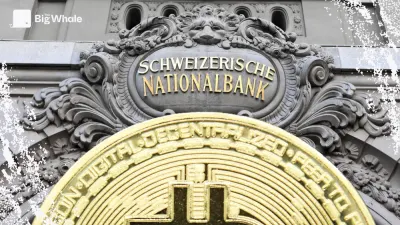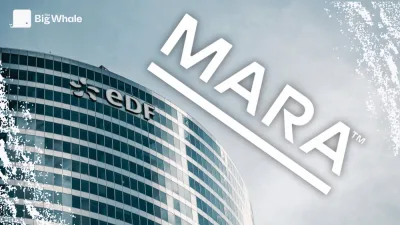TBW - The hidden business of airdrops: between mirage and reality

In recent years, airdrops have established themselves as a must-have practice in the crypto ecosystem. In 2024 alone, according to the Dropstab platform, nearly $15 billion in tokens were distributed in this way, valued at launch prices, not their historical maximum value (ATH).
Since 2020, these free distributions have attracted both retail investors, seduced by the promise of sometimes spectacular gains, and project holders or investment funds (VCs), looking for visibility and liquidity on their protocols. According to data compiled by CoinGecko, approximately $41 billion would have been distributed in this way between 2020 and 2024.
Why do crypto projects use airdrops?
The airdrop strategy has two main objectives: to gain notoriety and to accelerate protocol adoption. By distributing their tokens free of charge, the projects quickly create a buzz among the crypto community, particularly on social networks such as Twitter or Discord. This approach generates immediate buzz, attracts media attention, and facilitates the acquisition of new users while limiting traditional marketing expenditure.
Airdrops also create a committed community, capable of providing constructive feedback and actively participating in protocol decisions. By generating interest through the promise of rewards, this method increases liquidity and transaction volumes on the platforms concerned, contributing to their rapid development. The FOMO effect ("Fear of missing out") plays an important role here, encouraging large numbers of users to join the ecosystem in order to qualify for these rewards, temporarily boosting on-chain activity.
If some airdrops, such as those by Uniswap, Optimism, Arbitrum or Hyperliquid, have been resoundingly successful, it is because they have been able to transform this initial exposure into lasting adoption. But this strategy is not without its risks: airdrop hunters often sell their tokens immediately, creating a high level of volatility that can undermine a fledgling project. To be truly effective, an airdrop must do more than simply distribute tokens free of charge. It must be part of a carefully thought-out approach aimed at long-term commitment, in order to build a solid and loyal user base.
Is it always in an individual's interest to farmer airdrops?
At first glance, airdrops appear to be a free opportunity to get rich. However, the practice comes with its share of hidden costs and risks that are often ignored by users.
Real costs that are often ignored
Participating in an airdrop often involves significant costs, particularly the costs associated with gas on Ethereum. These costs increase rapidly when the airdrop requires several interactions, whether with smart contracts, bridges, or via the deposit of liquidity on protocols. Then there's another major cost: time. Identifying the right opportunities and meticulously following the eligibility requirements can represent a significant opportunity cost, sometimes disproportionate to the rewards hoped for.
Underestimated risks
Users also face very real dangers. Scams are proliferating, sometimes encouraging users to connect their wallet to fraudulent platforms or fall into phishing traps via clones of official sites. In addition, some projects set deliberately opaque eligibility conditions. There is also a significant tax risk: in several countries, tokens received in an airdrop are taxable on receipt, even if their value subsequently plummets. Finally, some immature blockchains expose users to poorly audited smart contracts, or even projects abandoned after distribution.
In short, airdrops, while attractive on paper, require vigilance, rigorous cost management, and serious consideration of risk to avoid financial disillusionment.
How to identify a promising airdrop
To maximise your chances of making a profit, it is essential to evaluate an airdrop carefully before committing to it. Specialised platforms such as CryptoRank offer invaluable data such as recent fundraisings, the reputation of investors and the position of the project in relation to its competitors. Generally speaking, a project backed by reputable funds benefits from increased credibility, even if this does not always guarantee a fair distribution of tokens.
The quality of the founding team is also a decisive criterion. Clearly identified and experienced founders bring more confidence than anonymous teams. Activity on social networks, particularly Twitter, Discord or Telegram, can also be used to assess the commitment of the community and detect any red flags: aggressive promotions, unrealistic promises or a lack of constructive exchanges are all clues to be taken into account.
Finally, consulting the whitepaper and understanding precisely the business model and roadmap of a project is crucial. A token with real utility and a clear strategy will be more likely to maintain its value after distribution. By combining these different elements, it becomes possible to effectively identify the most promising airdrops and avoid those presenting excessive risk.
Which users are really benefiting from airdrops?
During the first major airdrops, such as Uniswap's in September 2020, simplicity was the order of the day: every user who completed at least one swap before a specific date automatically received 400 UNI tokens. This fair distribution, which rewarded all early adopters without distinction, marked a turning point in the history of DeFi and massively popularised airdrops.
But the growing popularity of these distributions has led to an increase in opportunistic behaviour, forcing projects to tighten their eligibility criteria. Airdrops now sometimes look more like loyalty programmes or disguised liquidity mining, with complex points systems and campaigns requiring repeated interactions over a long period.
This development makes airdrops more selective, often penalising small portfolios and early adopters, to the benefit of whales capable of mobilising considerable capital. A prominent example occurred in March 2024, when Justin Sun deposited nearly $480 million in ETH on the Ether.fi protocol a few days before his airdrop, capturing a significant portion of the rewards intended for loyal users or those with smaller budgets.
Thus, even though airdrops continue to attract retail users, the big winners are now often those with significant resources or those able to accurately anticipate the eligibility criteria.
>> EtherFi (ETHFI) : Analysis of the liquid restaking leader
>> EigenLayer (EIGEN): Analysis of the restaking champion
Have airdrops reached their limits? The emblematic case of Scroll
Airdrops, a technique widely used in the crypto ecosystem to attract and retain users, are now clearly showing their limits. Scroll has become the perfect example. By multiplying airdrop seasons to retain its users, the project has exposed itself to a series of strategic errors that have ultimately discouraged its community.
Before its first airdrop, the Scroll blockchain was showing a sharp rise in its Total Value Locked (TVL), a key indicator of interest. But this positive momentum was abruptly reversed as soon as the first tokens were distributed. Several factors explain this rapid fall.
A clumsy execution: Scroll tried to follow the trend of points-based systems, notably by introducing badges and "canvas", concepts that were unclear to the majority of users. The result: a blatant lack of transparency, which led some users to pay more in transaction fees than they ultimately received in rewards.
Negligence towards early adopters: those who had incurred high transaction fees before the "Ethereum Dencun" update were not fairly rewarded. This perceived injustice fuelled a feeling of frustration and abandonment among these historical users.
A disputed distribution of tokens: while Scroll did distribute 5.5% of its total offering to its users, it also reserved 5.5% for the Binance Launchpool. This allowed certain large holders of Binance or BNB tokens to receive as much, or even more, reward than actual users of the Scroll platform. This decision was widely perceived as a gift to Binance at the expense of the active community.
The issue of decentralisation also arose: the "Marks" points system adopted by Scroll proved to be particularly concentrated. The 10 largest holders alone reportedly accumulated 10% of the points, while the top 100 held around 30%, a situation contrary to the fundamental principles of decentralisation expected by the crypto community.
The result was not long in coming: TVL fell drastically, as did trading volumes. A difficult market environment has further exacerbated this phenomenon.
.png)
Scroll may have announced a second season of airdrop with a new points system, but the initial enthusiasm is now absent. User confidence has taken a serious hit.
Today, Scroll is a perfect example of what not to do: favour external interests, neglect its own community and poorly execute its airdrop strategy.
VCs accused of distorting the spirit of airdrops: the example of Celestia (TIA)
Venture capital funds (VCs), key players in financing crypto projects, are now being singled out for their controversial role in airdrop strategies. The recent case of the Celestia token (TIA) is a good illustration of these tensions.
Despite the initial buzz generated by TIA thanks to a widely publicised airdrop, the project has recently come under fire for allowing its VC investors to store their locked tokens and immediately sell the rewards generated. This practice has created notable selling pressure on the token price.
For example, Polychain, a well-known fund, reportedly invested around $20 million in a Series A fundraising, and recouped nearly $82 million in TIA solely through staking, without having unlocked a single token. According to Celestia's official documentation, all locked tokens were indeed eligible for staking, with rewards immediately available for sale.
This situation has sparked a wave of outrage in the crypto community, particularly on X (formerly Twitter), where several users are denouncing the way these institutional funds are indirectly profiting from airdrops. Retail investors see this as a blatant injustice, accusing VCs of weighing negatively on price stability.
This context is fuelling a wider debate about the role of VCs in the tokenomics of crypto projects. While airdrops were supposed to reward early and committed users, the massive involvement of institutional funds now seems to be diluting that original spirit, causing deep community discontent.
The Hyperliquid standard: a new benchmark for the crypto ecosystem
The HYPE token airdrop did not simply make history by becoming the largest ever in terms of value at its peak (ATH). Above all, it marked a turning point in the way tokens are distributed: more than 70% of HYPE tokens were reserved directly for the community, without going through centralised exchanges or venture capital funds. The result: increased user confidence and spectacular demand, boosting its share price from $4 to $34 in less than a month.
There are several factors behind this unprecedented success.
A robust and functional product
While this may seem obvious, many crypto projects still overlook it: a high-performance, intuitive and stable product is essential to attract and retain a solid user base. Hyperliquid was able to deliver a fluid platform with no major bugs, fully meeting the expectations of its community.
A clear and relevant points system
Where many projects improvise points systems with no real use, Hyperliquid made it the cornerstone of its strategy. The system was clear, structured around distinct seasons:
- Alpha closed
- First public season
- Second public season
Two intermediate seasons, named "1.5" and "2.5", rewarded genuine use rather than simply chasing points. Transparent rules, a clear cap and precise deadlines announced in advance made all the difference.
A fair distribution of tokens
In contrast to projects like Scroll (15% distributed to the community), Eigenlayer (15% in "stakedrop") or Etherfi (around 15%), Hyperliquid has reserved 70% of its total token offering for its users. This generosity contrasts sharply with usual industry practice.
Recognition of early adopters
Hyperliquid stood out by generously rewarding its early adopters, even those who invested small amounts. This gesture reinforced the sense of belonging and loyalty to the project.
Intentional absence of listings on CEX
While obtaining a listing on a leading centralised platform such as Binance used to represent a guarantee of success, the reality of 2024 largely nuances this perception. According to a recent analysis by PAnews, several projects such as Manta, Eigen, Etherfi, Scroll, REZ (Renzo), ENA and AEVO are now trading below their initial listing price. Hyperliquid therefore consciously chose to bypass the centralised exchanges when it launched, a strategy that seems to have paid off.
.png)
Long-term momentum maintained
Often, crypto projects see their activity and TVL plummet after a massive airdrop. This is not the case with Hyperliquid. Data from Dune Analytics shows that USDC deposits and trading volume on the platform continued to grow after the airdrop, a sign of real usage and lasting community trust.
.png)
It's also interesting to note that only 31% of tokens have been distributed so far. The prospect of a further distribution could maintain and even strengthen this momentum over the coming months. But it would be simplistic to attribute the observed increase in activity exclusively to this expectation: Hyperliquid has truly created a model capable of retaining its users over the long term.
Has Hyperliquid created the perfect model?
The airdrop strategy adopted by Hyperliquid is attracting attention, but remains complex to replicate for other projects. Indeed, few have a technology comparable to that of this DEX perps (decentralised platform dedicated to derivatives), capable of listing its own token without relying on centralised platforms. What's more, most blockchain projects remain dependent on funding from investment funds to ensure they get off the ground.
Imitating Hyperliquid's approach perfectly therefore seems complicated, as each initiative has its own specific features and constraints. However, drawing on the key elements that have contributed to Hyperliquid's success remains relevant, notably the emphasis on community and measured but bold risk-taking. A model that has proved its worth, but which is not within everyone's reach.
>> Hyperliquid: are the criticisms of centralisation justified?
Conclusion
A successful airdrop values genuine commitment, guarantees fair distribution, encourages practical use of the token and places the community at the heart of the process. When done well, it becomes a powerful lever for long-term growth and loyalty.
However, the airdrop landscape has changed a great deal. Where once being among the first users was enough to earn a reward, today projects favour complex mechanisms with points systems and seasonal campaigns, sometimes amounting to disguised 'farming'. These practices, while interesting, complicate the task of small investors. It becomes difficult, if not impossible, to know in advance whether you will actually be eligible, while the most promising protocols quickly find themselves saturated.
This phenomenon mainly benefits the projects themselves. By setting up these incentive systems, they quickly attract cash (TVL) and generate volume, creating a virtuous circle to their advantage. For individual users, it's best to think of airdrops as a possible bonus rather than a priority objective, avoiding investing disproportionate effort in them.
The growing popularity of airdrops has also reinforced a negative phenomenon: the proliferation of Sybil attacks. Initially perceived as one-off rewards, airdrops are now seen by many as a real source of potential revenue. As a result, some users don't hesitate to create several wallets to multiply their potential earnings from distributions.
This trend is amplified by high-profile accounts of lucrative airdrops, with some users already pocketing substantial sums. Entire communities have organised themselves to systematically exploit these opportunities, blurring the boundaries between genuine users and Sybil fraudsters. For projects, countering these practices has become essential in order to preserve the fairness and stability of their token.
As an example, in 2024, Layer Zero implemented a proactive strategy to counter Sybil attacks when distributing its ZRO token. The Linea project, meanwhile, announced at the end of January that it had deleted almost 500,000 addresses in preparation for its future airdrop. It could also not count those with less than 1,500 LXP (their points system), even though there are real users behind them.
For an individual investor with a small portfolio, the eligibility criteria thus often remain unclear, making participation in these opportunities increasingly complicated.



